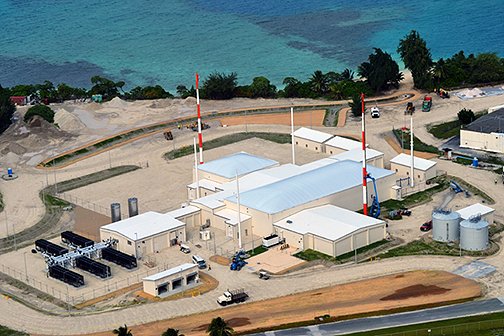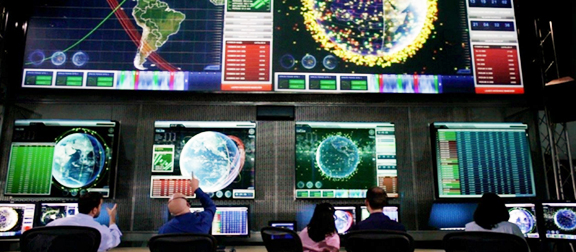
When the U.S. Air Force declares operational acceptance of the Space Fence radar located on Kwajalein Atoll, it will play a critical role in providing a tactical advantage to the nation's warfighters in the space domain.
Space Fence will use its flexibility, coverage, and sensitivity to detect and accurately track significantly more objects than the current-day catalog. This crucial capability is now one step closer to providing unprecedented space situational awareness with the system completing its developmental and operational testing phases and has entered a trial period - one of the last steps before achieving operational acceptance.

An aerial view of the Space Fence facility located on Kwajalein Atoll.
Image is courtesy of Lockheed Martin.
Beyond cataloging objects, Space Fence will detect closely-spaced objects, breakups, maneuvers, launches and conjunction assessments from LEO through GEO. Frequent collisions and deterioration of assets, such as defunct satellites and rocket boosters, have increased the amount of space debris and raised the risk of future collisions in space.
According to NASA's most recent Orbital Debris Quarterly News, NASA calculates about 17.6 million pounds of objects are in earth orbit. That number will only grow as more commercial space projects launch massive constellations with thousands of smallsats, presenting a huge problem for both U.S. government and commercial organizations.
That’s where the U.S. Air Force’s Space Fence will play a crucial role.
The radar system will also play a crucial role in the everyday lives of Americans who are becoming more dependent on space-based technologies for everything from weather forecasting, banking, global communications to GPS navigation. Today, these critical services are being threatened by hundreds of thousands of objects and space debris orbiting the Earth.
Space Fence has already begun to prove its unmatched capabilities. During testing of the system in March, it detected the debris field from an anti-satellite test conducted by India. Space Fence observed a significant amount of debris tracks surrounding the time of the event, and the system proved its ability to automatically predict and correlate their next crossing times.
Space Fence uses advanced solid-state S-band radar technology. The technology includes element level digital beamforming, Gallium Nitride-based, software defined programmability that can be adapted over time to address emerging needs of the warfighter.

Space Fence Operations Center. Image is courtesy of Lockheed Martin.
Dr. Rob Smith, VP and GM of Lockheed Martin’s Radar and Sensor Systems, said Space Fence will revolutionize the way objects that threaten both manned and unmanned military and commercial space assets are tracked and classified, critical to the national defense and economy. The Air Force Space Surveillance Network currently tracks about 25,000 objects. When Space Fence comes online, the catalog will experience significant growth and when fully operational, Space Fence will be the world’s largest and most advanced radar system, providing unprecedented space situational awareness.
In a 2019 interview with Breaking Defense, Gen. John Hyten, U.S Strategic Command commander, said of the Space Fence radar system, “I’ve been out there and the data is eye watering. It’s better than we even thought it would be.”
Once the Trial Period is successfully completed, operational acceptance of the radar will be declared by the U.S. Air Force.

